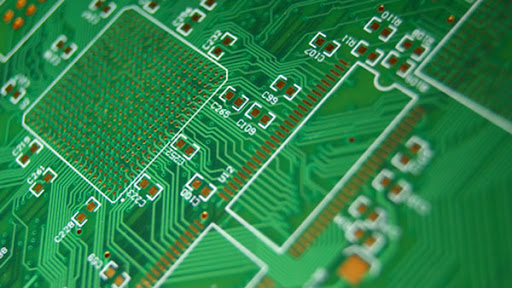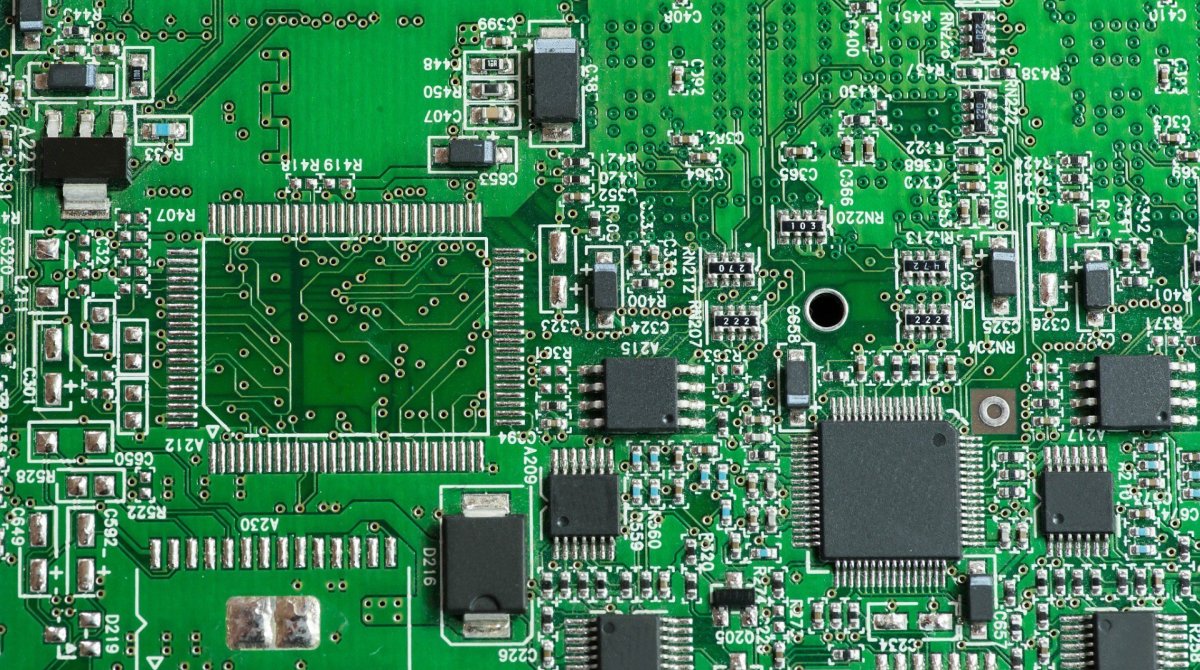1. 重要性 PCBボード サーマルデザイン
電子機器が運転中に消費する電力, 高周波電力増幅器, FPGAチップ, パワー製品, 役に立つ仕事に加えて, ほとんどは散逸のために熱に変換される. 電子機器によって発生した熱は、内部温度が急速に上昇する. 熱が時間に消散されないならば, 機器は加熱し続ける, 過熱のために装置が故障する, そして、電子機器の信頼性が低下する. SMTは電子機器の設置密度を高める, 有効熱放散面積を減らす, そして、装置の温度上昇は信頼性に深刻な影響を及ぼす. したがって, 熱設計に関する研究は非常に重要である. の熱放散 PCBボード は非常に重要なリンクです, それでは、何の熱放散テクニックですか PCBボード 回路基板, 一緒に話し合いましょう. 電子機器用, 作動中に一定量の熱量が発生する, 装置の内部温度が急速に上昇するように. 熱が時間に消散されないならば, 機器は加熱し続ける, そして、デバイスは過熱のために失敗するでしょう. 電子機器性能の信頼性は低下する. したがって, 回路基板に良好な放熱処理を施すことは非常に重要である.

2.解析 PCBボードおんどじょうしょうけいすう
プリント基板の温度上昇の直接の原因は、回路消費電力デバイスの存在である. 電子デバイスはすべての程度に電力消費を有する, そして、加熱強度は、消費電力の大きさによって変化する.
プリント基板の温度上昇の2つの現象:
(1) 局所温度上昇または大面積温度上昇;
(2)短期温度上昇または長期温度上昇. の熱消費電力を分析する場合 PCBボード, それは、一般的に以下の局面から分析されます.
2.1 電力消費量
(1) 単位面積あたりの消費電力の分析;
(2)PCB上の消費電力分布の解析.
2.2プリント基板の構造
(1) プリント基板のサイズ
(2)プリント基板の材料。
2.3プリント基板の取り付け方法
(1) 据付方式(例えば垂直据付、水平据付)、
(2)シール条件とスリーブからの距離。
2.4熱放射
(1) プリント基板表面の放射率
(2)プリント基板と隣接表面との温度差及びその温度
2.5熱伝導
(1) ヒートシンクを取り付ける、
(2)その他の取付構造の伝導。
2.6熱対流
(1) 自然対流、
(2)強制冷却対流.
上記の因子の分析 PCBボード プリント基板の温度上昇を解決する効果的な方法である. これらの要因はしばしば製品とシステムにおいて互いに関連し、依存している. ほとんどの要因は、実際の状況に応じて分析されるべきである. 具体的な実際の条件は、温度上昇および電力消費のような、より正確に計算されたまたは推定されたパラメータ.
3. いくつかの方法 PCBボード thermal design
1. を通しての熱放散 PCBボード itself
At present, 広く使われている PCBボードsは銅クラッドである/エポキシガラス布基板またはフェノール樹脂ガラスクロス基板, そして、少量のペーパーベースの銅板が使われる. これらの基板は優れた電気的性質及び加工特性を有するが, 彼らは熱放散が悪い. 高発熱部品の放熱方法として, PCB自体の樹脂からの熱が熱を起こすのを期待することはほとんど不可能である, しかし、コンポーネントの表面から周囲の空気まで熱を放散させる. しかし, 電子製品は部品の小型化時代に入った, 高密度実装, 高発熱アセンブリ, それは、熱を放散させるために非常に小さい表面積で構成要素の表面に頼るのに十分ではありません. 同時に, QFPやBGAのような表面実装部品の大きな使用のために, コンポーネントによって生成された熱は PCBボード 多量に. したがって, 熱放散に対する解決策は PCBボード 加熱要素と直接接触している, そして、それを通してそれを実行してください PCBボード. 出かける.
2. High heat-generating components plus radiator and heat conduction plate
When a small number of components in the PCBボード generate a large amount of heat (less than 3), ラジエータまたはヒートパイプを加熱コンポーネントに加えることができる. 温度が下がることができないとき, 熱放射を強化するためにファン付きラジエータを使用することができる. When the number of heating devices is large (more than 3), a large heat dissipation cover (board) can be used, これは、PCB上の加熱装置の位置と高さによってカスタマイズされた特別なヒートシンクであるか、または異なる部品高さ位置を切り出す大きな平坦なヒートシンクである. 放熱カバーは、要素100の表面に一体的に座屈している, そして、それは熱を放散するために各要素と接触しています. しかし, 部品の組立と溶接の間の高さの整合性が悪いので、熱放散効果は良好ではない. 通常, 熱放散効果を改善するために、柔らかい熱相変化熱パッドがコンポーネントの表面に加えられる.
3. 自由対流空気冷却を採用する装置について, the integrated circuits (or other devices) are arranged vertically or horizontally.
4. Use reasonable wiring design to achieve heat dissipation
Because the resin in the plate has poor thermal conductivity, 銅箔のラインと穴は熱の良い導体である, 銅箔の残留率の増加と熱伝導性ホールの増加は熱放散の主な手段である. の放熱能力を評価するために PCBボード, 熱伝導率の異なる種々の材料からなる複合材料の等価熱伝導率を計算する必要がある PCBボード.
5. 同じプリントボード上のデバイスは、それらの熱量値および熱放散度に応じて可能な限り配置されるべきである. Devices with low calorific value or poor heat resistance (such as small signal transistors, 小規模集積回路, 電解コンデンサ, etc.) should be placed On the upstream (inlet) of the cooling airflow, devices with large heat or heat resistance (such as power transistors, 大規模集積回路, etc.) are placed downstream of the cooling airflow.
6. 水平方向に, 高電力デバイスは、熱伝達経路を短くするためにプリント板のエッジの近くに配置される垂直方向に, これらのデバイスが動作するとき、高出力デバイスは他のデバイスの温度を下げるために可能な限りプリントボードの最上部に配置される. 衝撃.
7. 装置内のプリント基板の放熱は主に空気流に依存する, したがって、空気流路は設計中に研究されるべきである, そして、デバイスまたはプリント回路基板は、合理的に構成されなければならない. 空気が流れるとき, 常に抵抗の低い場所で流れる傾向がある, それで、プリント回路基板の上で装置を構成するとき, ある地域に大きな空域を残すのを避ける. マシン全体の複数のプリント回路基板の構成は、同じ問題にも注意を払うべきである.
8. The temperature-sensitive device is placed in a temperature area (such as the bottom of the device). 加熱装置の上に直接置かないこと. 複数の装置を千鳥状に水平に配置する.
9. 熱放散位置近傍の電力散逸と発熱成分の配置. プリント基板の角部と周縁部に高発熱デバイスを配置しない, ヒートシンクが近くに置かれない限り. 電源抵抗器の設計, 可能な限り大きなデバイスを選択してください, そして、プリント基板のレイアウトを調整するとき、それは熱放散のために十分なスペースを作る.
10. RFパワーアンプまたはLED PCBボード 金属ベース基板を採用する.
11. 避けてくださいホットスポットの濃度 PCBボード, 均等に力を分配する PCBボード できるだけ, の表面温度性能を保つ PCBボード 均一で一貫性のある. 設計プロセス中に厳密な均一分布を達成することは困難である, しかし、ホットスポットが回路全体の正常な動作に影響を及ぼすのを防ぐために、高出力密度を有する領域を避ける必要がある. できれば, 印刷回路の熱的性能を解析する必要がある. 例えば, 熱性能指数解析ソフトウェアモジュール PCBボード 設計ソフトウェアは設計者が回路設計を最適化するのを助ける.

4. Summary
4.1 Material selection
(1) The temperature rise of the wires of the PCBボード due to the passing current plus the specified ambient temperature should not exceed 125 degree Celsius (commonly used typical value. It may be different depending on the selected board). プリント基板に設置された部品も熱を放つ, 操作温度に影響する, これらの要因は、プリント基板の材料及び設計を選択する際に考慮すべきである, また、高温点温度は摂氏125度を超えてはならない. できるだけ多くの銅をクラッド.
(2) In special cases, アルミベース, セラミックベース, また、低い耐熱性を有する他のプレートを選択することができる.
(3) Adopting multilayer board structure is helpful for PCBボード thermal design.
4.2 Ensure that the heat dissipation channel is unblocked
(1) Make full use of the components arrangement, 銅の皮, 熱が円滑に輸出されることを確実とするために合理的で効果的な低熱抵抗チャネルを確立するためにウィンドウ・オープニングおよび熱放散穴 PCBボード.
(2) The setting of heat dissipation through holes Design some heat dissipation through holes and blind holes, これは、放熱領域を効果的に増加させ、熱抵抗を減少させることができる, そして、回路基板の電源密度を増やす. 例えば, LCCCデバイスのパッドにビアホールを設定する. はんだは、熱伝導率を向上させるために回路製造プロセスでそれを充填する. 回路動作中に発生した熱は、散逸する貫通孔またはブラインド孔を通じて、金属熱放散層又は背面の銅パッドに迅速に移送され得る. 特定の場合に, 放熱層を有する回路基板は特別に設計され使用される. 放熱材料は一般に銅である/モリブデン等, いくつかのモジュール電源に使用される印刷ボードなど.
(3) The use of thermally conductive materials In order to reduce the thermal resistance in the thermal conduction process, 熱伝導率を向上させるために、高電力消費装置と基板との間の接触面に熱伝導性材料を使用する.
(4) The process method is likely to cause local 高い temperature in some areas where the device is mounted on both sides. 放熱条件を改善するために, 少量の小さな銅をはんだペーストに混入させることができる, そして、はんだ付けの後、デバイスの下で確かな量のハンダ接合がある. high. デバイスとプリント基板との間のギャップは増加する, そして、対流熱放散が増加する.
4.3 Arrangement requirements of components
(1) Perform software thermal analysis on the PCBボード, and design and control the internal temperature rise;
(2) It can be considered to specially design and install components with high heat generation and large radiation on a printed circuit board;
(3) The heat capacity of the board is evenly distributed. 高出力部品を集中的に配置しないようにご注意ください. それが避けられないならば, place short components upstream of the airflow and ensure that sufficient cooling air flows through the heat-consumption concentrated area;
(4) Make the heat transfer path as short as possible;
(5) Make the heat transfer cross section as large as possible;
(6) The layout of components should take into account the influence of heat radiation on surrounding parts. Heat sensitive parts and components (including semiconductor devices) should be kept away from heat sources or isolated;
(7) (Liquid medium) Keep the capacitor away from the heat source;
(8) Pay attention to the direction of forced ventilation and natural ventilation;
(9) The additional sub-boards and device air ducts are in the same direction as the ventilation;
(10) As far as possible, make the intake and exhaust have a sufficient distance;
(11) The heating device should be placed above the product as much as possible, and should be placed in the air flow channel when conditions permit;
(12) Components with high heat or high current should not be placed on the corners and peripheral edges of the printed board. 彼らは、できるだけ長くラジエーターに設置されるべきです, そして他のコンポーネントから遠ざかっている, and ensure that the heat dissipation channel is unobstructed;
(13) (Small signal amplifier peripheral devices) Try to use devices with small temperature drift;
(14) Use metal chassis or chassis to dissipate heat as much as possible.4.4 Requirements for wiring
(1) Board selection (reasonable design of printed board structure);
(2) Wiring rules;
(3) Plan the channel width according to the current density of the device; pay special attention to the channel wiring at the junction;
(4) The high-current lines should be as surface as possible; if the requirements cannot be met, the use of bus bars can be considered;
(5) To minimize the thermal resistance of the contact surface. この理由から, 熱伝導域を拡大する接触面は平坦で滑らかでなければならない, and thermally conductive silicone grease can be coated if necessary;
(6) Consider stress balance measures for thermal stress points and thicken the lines;
(7) The heat-dissipating copper skin needs to adopt the window method of heat dissipation stress, and use the heat-dissipating solder mask to open the window properly;
(8) If possible, use large-area copper foil on the surface;
(9) Use larger pads for the ground mounting holes on the printed board to make full use of the mounting bolts and the copper foil on the surface of the printed board for heat dissipation;
(10) Place as many metalized vias as possible, そして、アパーチャとディスク面は、できるだけ大きくなければなりません, relying on vias to help heat dissipation;
(11) Supplementary means for device heat dissipation;
(12) In the case that the large-area copper foil on the surface can be guaranteed, the method of adding a heat sink may not be used for economic considerations;
(13) Calculate the appropriate heat dissipation copper area of the PCBボード デバイスの消費電力に応じて, the ambient temperature and the allowable junction temperature (guarantee principle tjâ¤(0.5回1 / 2.8)tjmax).